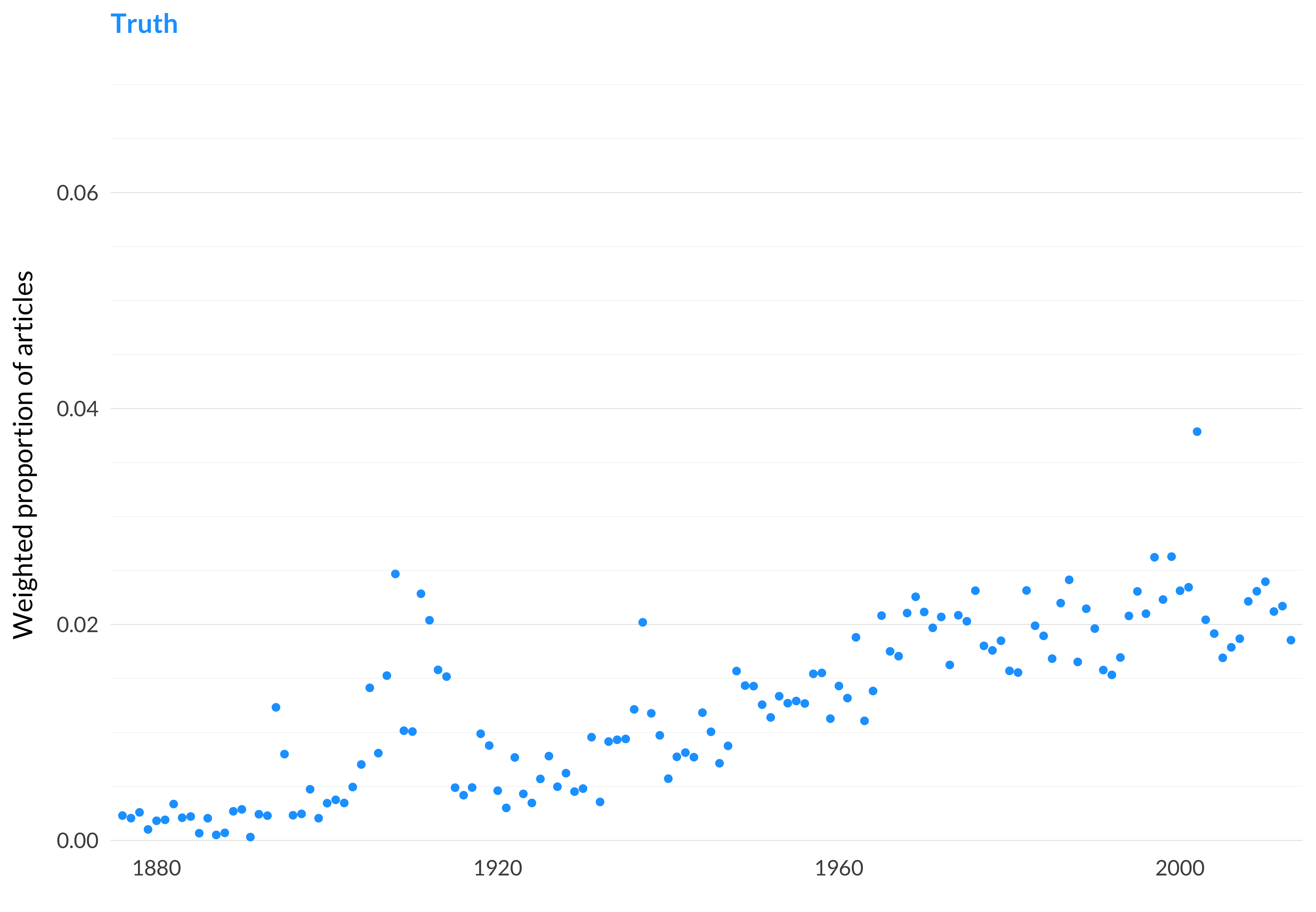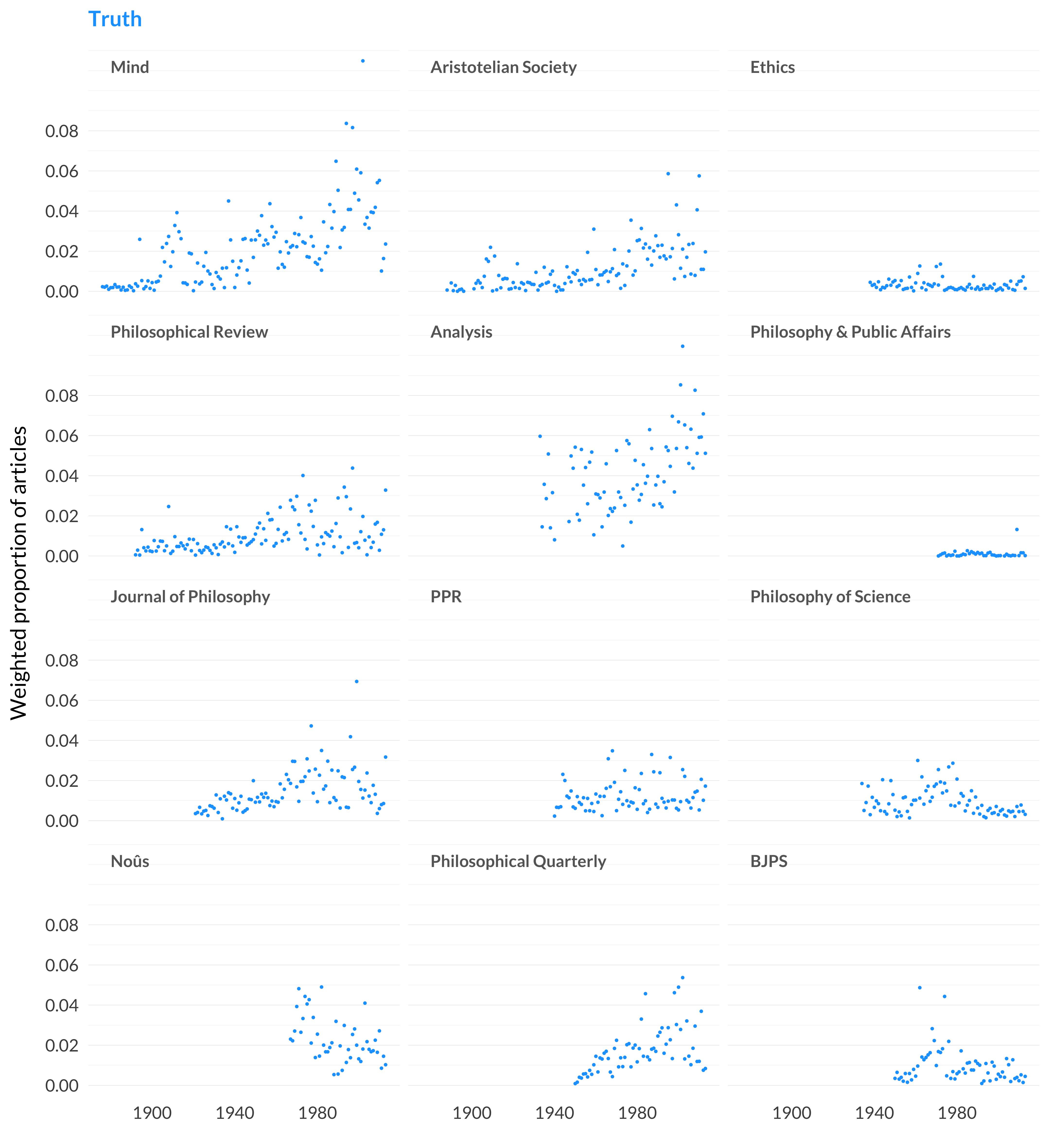2.59 Truth
Category: Logic and Mathematics
Keywords: tarski, liar, snow, truth, paradoxes, falsity, paradox, sentences, sentence, correspondence, semantical, false, schema, true, sen
Number of Articles: 454
Percentage of Total: 1.4%
Rank: 16th
Weighted Number of Articles: 536.8
Percentage of Total: 1.7%
Rank: 8th
Mean Publication Year: 1984.7
Weighted Mean Publication Year: 1978.9
Median Publication Year: 1989
Modal Publication Year: 2002
Topic with Most Overlap: Verification (0.036)
Topic this Overlaps Most With: Vagueness (0.062)
Topic with Least Overlap: Liberal Democracy (0.00024)
Topic this Overlaps Least With: Psychology (0.00083)

Figure 2.138: Truth.

Figure 2.139: Truth articles in each journal.
Comments
The graphs by journal do not make this look like a particularly big topic, but the numbers at the top show, it’s the eighth biggest by weighted count. And that’s not surprising—I would have guessed that theories of truth would be a big deal. And so they are, except they aren’t a particularly big part of any journal in any year except for Mind in the early 2000s.
The spike in the late 1900s and early 1910s is due to an interest in theories of truth in pragmatist and voluntarist philosophical theories. Some of these papers involved early contributions from Susan Stebbing, who would go on to contribute many papers to the British journals we’re looking at.
The only one of these 27 articles that is actually in this topic is the earliest of them, a two page note critical of Schiller’s defences of pragmatism. But an interest in how different theories think about truth runs through a lot of her work. And the model picks this up; a lot of these articles are as much about truth as anything else. For instance, her Aristotelian Society article on Bergson (which was extracted from her MA thesis!) cuts across a number of the topics in this model.
| Subject | Probability |
|---|---|
| Life and value | 0.2510 |
| Idealism | 0.2147 |
| Truth | 0.0808 |
| Kant | 0.0624 |
| Knowledge | 0.0550 |
| Dewey and pragmatism | 0.0505 |
| Other history | 0.0397 |
| Methodology of science | 0.0393 |
| Early modern | 0.0280 |
| Ordinary language | 0.0261 |
| Classical space and time | 0.0259 |
| Promises and imperatives | 0.0251 |
Unlike almost every other topic with a notable presence in prewar philosophy, truth was undergoing a resurgence towards the end of the period I’m looking at. It’s moved from being a metaphysical (or perhaps epistemological) concern to a more distinctively logical one. That is, most of those articles on the right of the graph are about paradoxes, and about how and whether classical logic should be revised to handle them. That’s a somewhat different subject matter to what, say, Stebbing and Schiller were debating, but I think the model got it right in linking them together.
And between them there are a lot of articles on Tarskian and Davidsonian theories of truth. A perhaps surprising result of this is that snow is a keyword for the topic. I’m a little surprised that white doesn’t come with it.